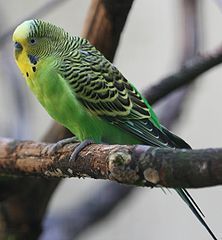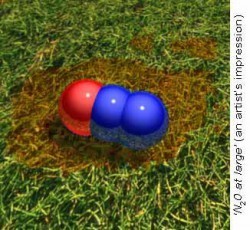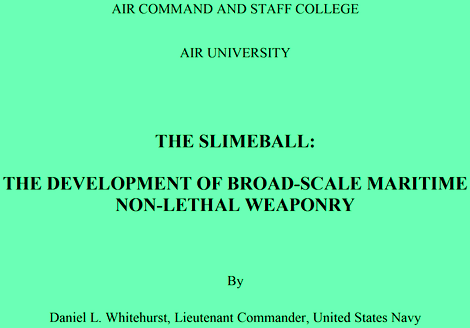Marc Abrahams's Blog, page 594
February 20, 2012
Slimeball: A sticky weapon to immobilize large ships
Slime would become the US military's prime weapon to immobilise large ships under a scheme outlined for the US Air Force's Air Command and Staff College. Lieutenant Commander Daniel Whitehurst, a student at the college, figured out how to combine a raft of existing technologies to produce the officially "non-lethal" armament he calls The Slimeball. He prepared a report in 2009. "The Slimeball," Whitehurst writes, "is a two-part weapon system consisting of a floating sticky foam barrier that will resist attempts to remove it, and a submerged gel barrier that will impede movement through a ship channel. The parts can also be used independently of each other".
Whitehurst gives three examples of targets well suited for Slimeball's gooey power. He explains how to use it against pirates in Boossaaso, Somalia; against the Iranian navy near the city of Bandar Abbas in the Strait of Hormuz; and against China's underground submarine base at Sanya, on Hainan Island….
So begins this week's Improbable Research column in The Guardian.

Superseded accentuations ruckus in Canada
Thomas A. Reisner, author of the beloved classic book Dictionary of Superseded Accentuations in Eighteenth Century English [Herbert Lang Et Co, publishers, 1976, ISBN 3261019611], cares about modern usage. Let no one claim otherwise. The October 27, 2007 issue of the Montreal Gazette carries a report about Professor Reisner (who is retired from teaching at Laval University):
Last month, Reisner sent an email to CBC headquarters in Toronto, complaining about the mispronunciation of "electoral" and "municipal." The corporation's newscasters, he noticed, have begun to stress the third syllable of these words, rather than the second.
"I recognize that there are many words where alternative accentuations are permissible," he wrote. "These are not of that order. Please may I emphatically suggest that this totally superfluous piece of semi-literate vulgarism be expunged from our national broadcaster's transmissions?"

Evidence of a failed experiment: sushi burgers
This photograph of a restaurant menu page was taken in Vancouver, BC, in a restaurant a few blocks away from the annual meeting of the American Association for the Advancement of Science. It was the only evidence we could find of what appears to be a failed experiment:


News for tadpole and frog tasters
National Geographic published an article called "Why Some Poison Frogs Taste Bittersweet When Licked", which references their earlier report called "For Frog-Licking Scientist, the Tongue Says It All". It's based on the study
"Sex-Related Differences in Alkaloid Chemical Defenses of the Dendrobatid Frog Oophaga pumilio from Cayo Nancy, Bocas del Toro, Panama," Ralph A. Saporito, Maureen A. Donnelly, Anne A. Madden, H. Martin Garraffo and Thomas F. Spande. Natural Products, March 26, 2010, Volume 73, Issue 3, pp 317–321.
(Thanks to investigator Shoichi F for bringing this to our attention.)
One can, if one wants, see connections between this research and the much earlier (and Ig Nobel Prize winning) study
"On the Comparative Palatability of Some Dry-Season Tadpoles from Costa Rica." Richard Wassersug, The American Midland Naturalist, vol. 86, no. 1, July 1971, pp. 101-9.

Budgerigarian Contagious Yawning (quite untortoisean!)
 Although scientists have failed to find evidence of contagious yawning in tortoises (though those scientists succeeded in winning an Ig Nobel Prize), other scientists have now found evidence, they say, of contagious yawning in budgies [a non-yawning specimen of which is pictured here in a photo by Elektrofisch]. They published a study about it:
Although scientists have failed to find evidence of contagious yawning in tortoises (though those scientists succeeded in winning an Ig Nobel Prize), other scientists have now found evidence, they say, of contagious yawning in budgies [a non-yawning specimen of which is pictured here in a photo by Elektrofisch]. They published a study about it:
"Evidence for contagious behaviors in budgerigars (Melopsittacus undulatus): An observational study of yawning and stretching." Michael L. Miller, Andrew C. Gallup , Andrea R. Vogel, Shannon M. Vicario, Anne B. Clark, Behavioural Processes, Volume 89, Issue 3, March 2012, pp. 264–270. The authors, at Binghamton University, Binghamton, NY, report:
"Yawning is contagious in humans and some non-human primates. If there are social functions to contagious behaviors, such as yawning, they might occur in other highly social vertebrates. To investigate this possibility, we conducted an observational study of yawning and an associated behavior, stretching, in budgerigars (Melopsittacus undulatus), a social, flock-living parrot…. This study provides the first detailed description of temporal patterns of yawning under social conditions in a flock-living species as well as the first support for contagious yawning and stretching in a non-primate species in a natural context. Experimental evidence will be necessary to confirm the extent of contagion in either behavior."
(HT Dan Vergano)

Laughing gas from cow pee – a solution
 Following Improbable's recent note regarding Greenhouse gasses in a greenhouse, we ask : 'How many patches of cow urine would a dentist need in order to perform a tooth extraction?' The question is not as laughable as it might seem because Nitrous Oxide (or N2O, or 'laughing gas') is produced in prodigious quantities worldwide by the natural degradation of animal wastes on agricultural land.
Following Improbable's recent note regarding Greenhouse gasses in a greenhouse, we ask : 'How many patches of cow urine would a dentist need in order to perform a tooth extraction?' The question is not as laughable as it might seem because Nitrous Oxide (or N2O, or 'laughing gas') is produced in prodigious quantities worldwide by the natural degradation of animal wastes on agricultural land.
The US Environmental Protection Agency puts the figure for manure management emissions in the US alone at around 17 million metric tons per year (in CO2 equivalents). Unfortunately, aside from its anaesthetic (and other*) uses, N2O is also a powerful 'greenhouse gas' – and thus various strategies are proposed to limit its emissions. See for example: Biochar Incorporation into Pasture Soil Suppresses in situ Nitrous Oxide Emissions from Ruminant Urine Patches (published in the Journal of Environmental Quality. 2011 Mar-Apr;40(2):468-76.)
* Some other uses for N2O are described:
• here (page 8 in the .pdf)
• here
• here and
• here

February 19, 2012
Renaissance martial arts experts
If you are in need of experts, especially on renaissance martial arts, consider consulting the consultants at the Association for Renaissance Martial Arts:
In our continuing effort aimed at aiding the credibility and legitimacy of this subject, the ARMA's presents it official panel of select consultants. This distinguished list of credentialed academics, historians, and distinguished professional experts in European arms and armor provides us with an unprecedented and unrivaled resource on which to rely on in our studies.
Here is their evocative logo:

Elves, lightning, El Niño and La Niña
Complain all you like that it would be dull to study the weather. This study demonstrates otherwise:
"Occurrence of elves and lightning during El Niño and La Niña," Wu, Y. J.; Chen, A. B.; Hsu, H. H.; Chou, J. K.; Chang, S. C.; Lee, L. J.; Lee, Y. J.; Su, H. T.; Kuo, C. L.; Hsu, R. R.; Frey, H. U.; Mende, S. B.; Takahashi, Y.; Lee, L. C., Geophysical Research Letters, Vol. 39, No. 3, L03106. The authors are at various institutions in Taiwan, the US, and Japan.
(Thanks to investigator Tom Gill for bringing this to our attention.)
10 February 2012

February 18, 2012
Stuff and nonsense, together at last!
Ladies and gentlemen, behold stuff and nonsense, together at last!
The Creation Museum, in North Carolina, is also the Taxidermy Hall of Fame of North Carolina. Behold their logo:
(HT Matt Shipman)

Orwell's Believe-It-and-Not
"The point is that we are all capable of believing things which we know to be untrue, and then, when we are finally proved wrong, impudently twisting the facts so as to show that we were right. Intellectually, it is possible to carry on this process for an indefinite time: the only check on it is that sooner or later a false belief bumps up against solid reality, usually on a battlefield."
—George Orwell, "In Front of Your Nose", 1946.

Marc Abrahams's Blog
- Marc Abrahams's profile
- 14 followers



























